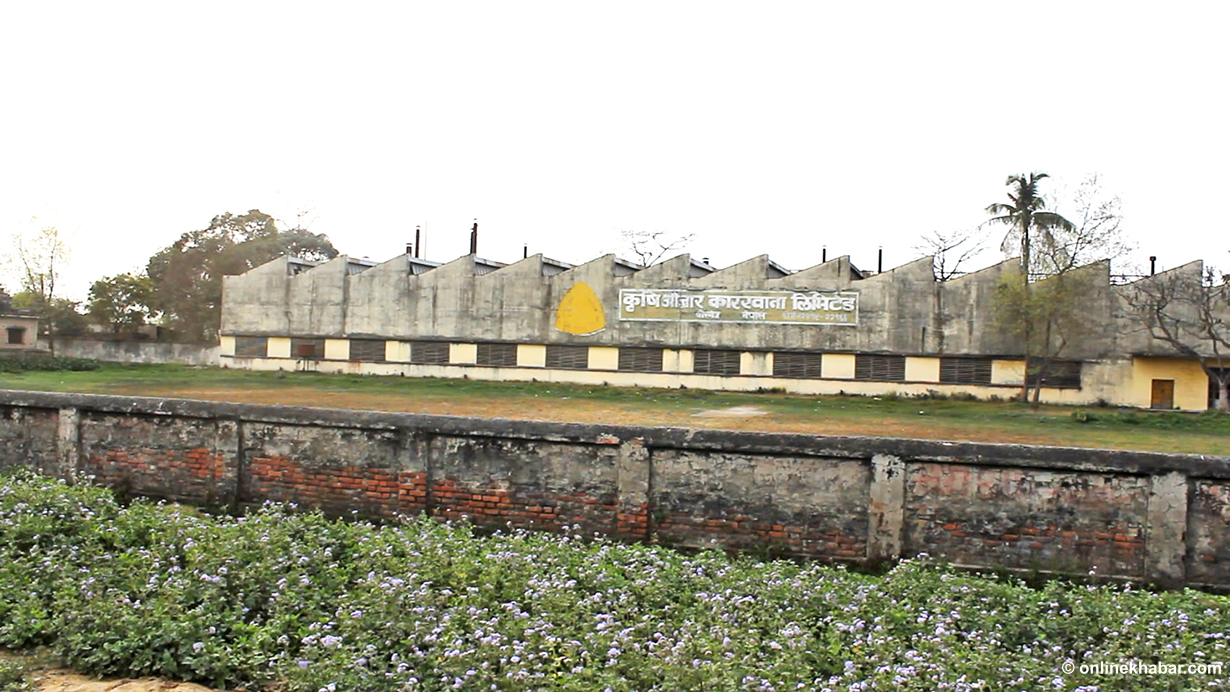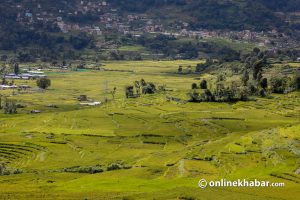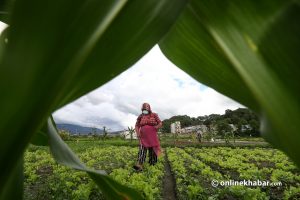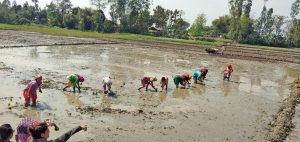Supposedly, Nepal’s only agricultural tool factory that once produced agricultural tools and even sold them to India today lies in despair. The government of Nepal had closed this Birgunj-based factory almost two decades ago so as to promote the private sector.
According to the employees, Nepal used to export some of the agricultural supplies to India during the operation of the factory.
Ram Lakhan Sah, a former factory employee, says that Nepali products were preferred not only by the local farmers then but also by those in the neighbouring country, India, as the soil and environment here were suitable. Sah further says he remembers that they sold factory-made wheat thresher to the Indian government at that time.
Another former worker Lal Babu Prasad Kurmi adds he remembers that the Indian government also made a thresher after seeing the one Nepal had made.
But, the factory is now shut. “The factory earned its name within the nation and abroad. But, it has been closed since 2002. Nepal has seen a dozen prime ministers since its closure, but to expect the factory to open again seems like a far-fetched dream,” expressed Sah.
At that time, the factory gave facilities including a pump set and bullock cart to the local farmers. Those beneficiaries still make them remember the factory for its contribution, says Kurmi, “Even years after its closure, farmers from far and wide used to come to the factory to buy agricultural tools including hand sickle, hoe, spade, thresher and pump set.” Hence, they also hope the factory can be operated again if the government makes serious efforts.
In ruins
The once successful factory of the country is now in ruins. The machines inside are now in a state of despair; so are its doors and windows.
The agricultural tool factory was established in Birgunj with the help of the then Soviet Union (now Russia). The factory was also producing ploughs, tillers, threshers, pump sets, garbage containers, electric poles, suspension bridges, drinking water and sewage management tools in addition to hoes and spades.
Former factory worker Mohammad Abdul Miya says that the factory used to have an annual turnover of up to Rs 110 million. “I used to give a bonus to 300 employees because we were in profit. We used to provide farmers with the tools that were cheap in an easy and accessible manner.”

According to customs data, Nepal today imports more than Rs 20 billion worth of agricultural tools and equipment annually. Also, the statistics of the Ministry of Agriculture and Livestock Development (MoALD) state 5,000-8,000 tractors, 2,000 mini-tillers, 5,500 power tillers and 30,000 threshers are imported annually from other countries including India.
Regardless of the reasons why the factory got closed, local farmer Raut Kurmi says it was a loss to the workers and the country. “The factory employed the locals and provided excessive service facilities and subsidies to the farmers including pump sets, and tyre carts. If the factory was open even today, thousands of locals would have Nepal-made tractors and power tillers. But unfortunately, it was shut down by the government.”
But, the then production engineer Dev Narayan Sah says if the government still wants to operate the factory, it can be operated immediately.
Locals say the factory started collapsing after the political change in 1989. People close to the government started being appointed in the factory. And as the deficit widened, the government, in the name of the open market economy, adopted a policy to allow the private sector to operate.
Following the policy, the factory was handed over to some engineers. “In the factory, they started to pay more attention to shifting the equipment and tools rather than the production of the factory,” says Kurmi.
What can be done
When the government started scrapping off the factory, there was a lot of protests. Amid the confusion, some employees voluntarily resigned while others were compelled to. Of the 70 employees still left, the government employed 14 people to take care of the factory and its security. Meanwhile, the rest of the employees still have not resigned and are fighting with the government for their job.
“The government dreams of developing the country by modernising the traditional agricultural profession and carrying out an agricultural revolution. But, the same government does not see the status of the factory,” says engineer Sah.
It is not that voices to reopen the factory was never put forward. Sah says the factory can run as it is. But if the factory is to be modernised, modern agricultural tools and tractors can also be made. He suggests it would be fruitful if the industry could produce both old and new agricultural equipment.
The factory can be run by the government or private sector, or it can be leased through cooperatives. However, no effective study has been done so far, adds Sah.
But, the government has not shown its interest.
According to Gopa Kedia, a businessman and a central member of the Federation of Nepalese Chambers of Commerce and Industry (FNCCI), if the factory is operational, imports can be reduced even if to a small extent.
In the current situation, these machines can also be used as a ‘production engineer,’ says Sah. He informs, “A few years ago, we evaluated that it would cost Rs 15 million to reopen and operate well. But, we do not know the situation now.”
But, others say the reopening would cost more than Rs one billion.

























